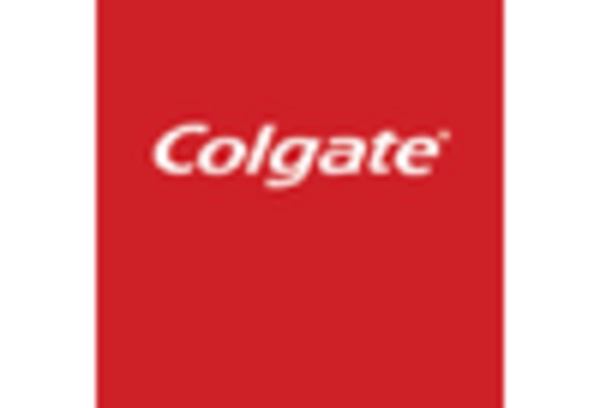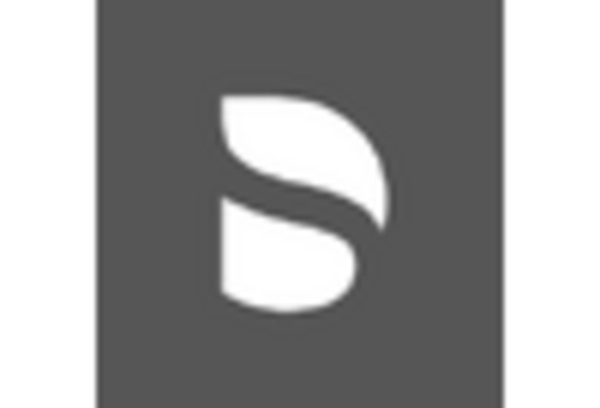Increased Focus on Oral Health
The growing emphasis on oral health in the US is significantly impacting the sleeping bruxism-treatment market. With rising awareness about the consequences of untreated bruxism, including dental wear and temporomandibular joint disorders, more individuals are seeking preventive and corrective treatments. The American Dental Association has reported that nearly 10% of adults suffer from bruxism, prompting dental professionals to advocate for early intervention. This focus on oral health is likely to drive the demand for custom dental appliances and other therapeutic options. Additionally, as dental insurance plans increasingly cover bruxism treatments, more patients may pursue these solutions, further propelling market growth. The sleeping bruxism-treatment market is thus positioned to benefit from this heightened awareness and proactive approach to oral health.
Advancements in Dental Technology
Technological innovations in dental care are transforming the sleeping bruxism-treatment market. The introduction of advanced diagnostic tools, such as digital imaging and sleep monitoring devices, allows for more accurate assessments of bruxism severity. Moreover, the development of custom-fitted dental guards using 3D printing technology enhances patient comfort and compliance. These advancements not only improve treatment outcomes but also encourage more patients to seek help for their bruxism issues. The market is expected to grow as these technologies become more accessible and affordable. Furthermore, the integration of telehealth services in dental care provides patients with convenient access to consultations and follow-ups, potentially increasing treatment adherence. Overall, these technological advancements are likely to play a crucial role in shaping the future of the sleeping bruxism-treatment market.
Rising Incidence of Sleep Disorders
The increasing prevalence of sleep disorders in the US is a notable driver for the sleeping bruxism-treatment market. Studies indicate that approximately 30% of adults experience sleep disturbances, which can exacerbate bruxism. As awareness of the connection between sleep quality and bruxism grows, more individuals seek treatment options. This trend is likely to boost demand for various therapeutic solutions, including dental devices and behavioral therapies. The market is projected to expand as healthcare providers recognize the need for effective interventions. Furthermore, the rising incidence of stress-related disorders, which often contribute to bruxism, adds to the urgency for effective treatment options. Consequently, the sleeping bruxism-treatment market is expected to witness significant growth as more patients are diagnosed and treated for sleep-related issues.
Expansion of Dental Insurance Coverage
The expansion of dental insurance coverage for bruxism treatments is a significant driver for the sleeping bruxism-treatment market. As insurance providers increasingly recognize bruxism as a legitimate dental concern, more patients are likely to seek treatment options. This trend is particularly relevant in the context of rising healthcare costs, where patients are more inclined to pursue covered treatments. The availability of financial support for dental appliances and therapeutic interventions can lead to higher treatment rates among affected individuals. Additionally, as more employers offer comprehensive dental plans that include bruxism treatments, the market is expected to grow. This shift in insurance coverage is likely to enhance accessibility to necessary treatments, thereby positively impacting the sleeping bruxism-treatment market.
Growing Awareness of Stress Management
The rising recognition of stress management as a critical component of overall health is influencing the sleeping bruxism-treatment market. Stress is a well-documented trigger for bruxism, and as more individuals acknowledge its impact on their well-being, there is a corresponding increase in demand for stress-reduction therapies. Techniques such as mindfulness, cognitive behavioral therapy, and relaxation exercises are gaining popularity, leading to a holistic approach to bruxism treatment. This trend may encourage healthcare providers to incorporate stress management strategies into their treatment plans, thereby expanding the range of options available to patients. As awareness of the link between stress and bruxism continues to grow, the sleeping bruxism-treatment market is likely to experience a shift towards more comprehensive treatment modalities.

















Leave a Comment